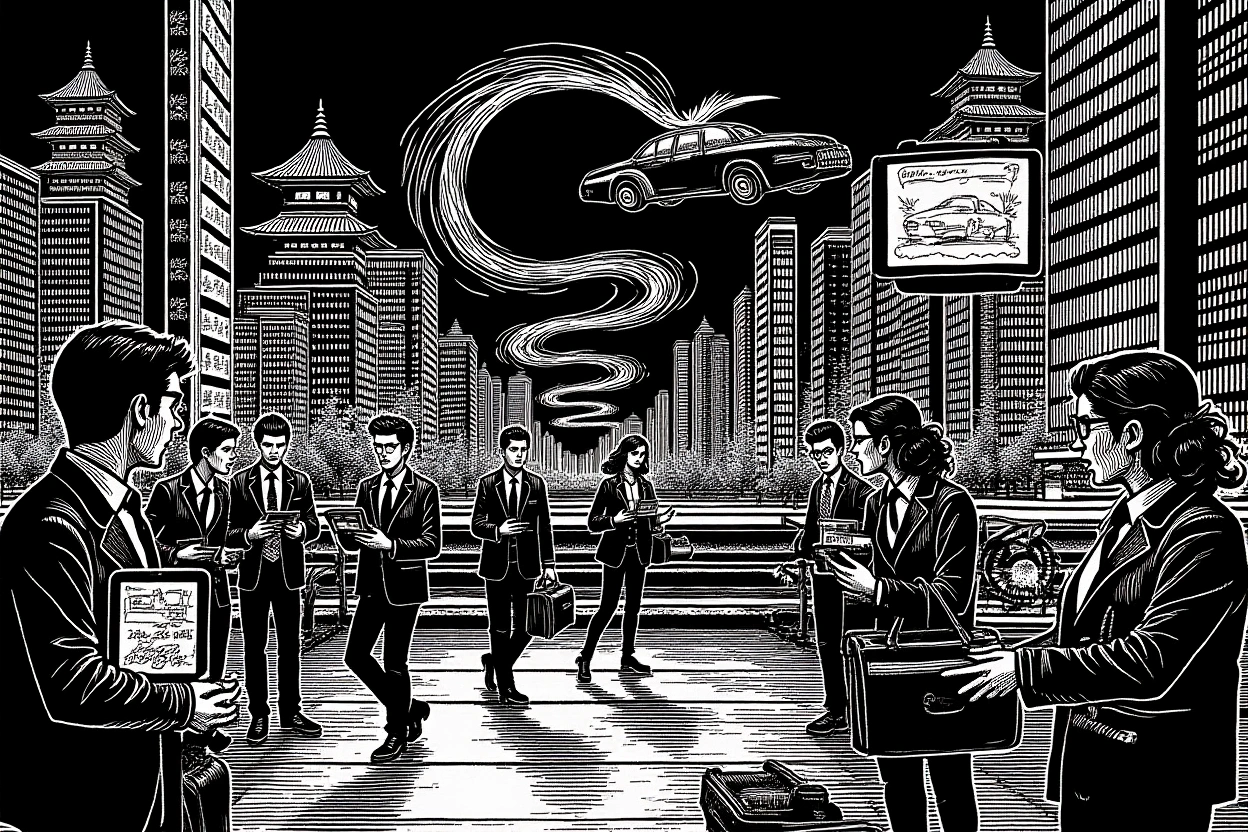Historic Shift in China’s Auto Industry
China’s automotive landscape underwent a tectonic shift on July 29 as China Changan Automobile Group officially commenced operations in Chongqing. This landmark event establishes the nation’s third central state-owned automobile enterprise alongside China FAW Group and Dongfeng Motor Corporation, consolidating a strategic triad under State-owned Assets Supervision and Administration Commission (SASAC) oversight. With registered capital of ¥20 billion ($2.75 billion), this restructured entity signals Beijing’s commitment to accelerating next-generation vehicle development while reshaping global auto manufacturing hierarchies.
Key implications:
– Completion of China’s automotive SOE triumvirate
– Centralized R&D resources for electrification transition
– Strengthened export capability in competitive markets
– Structural optimization of state-owned enterprises
Operational Launch and Leadership Structure
China Changan Automobile Group formally registered on July 27 before its ceremonial inauguration at Chongqing headquarters. SASAC confirmed Zhu Huarong (朱华荣) as Chairman, leveraging his prior success transforming Changan Automobile into China’s second-largest EV producer. The executive retains leadership of subsidiaries including Avatr Technology and Chang’an Ford, ensuring continuity in electrification initiatives across brands that immediately rebranded social media assets with unified “New Changan” identifiers.
Restructuring Mechanics
The creation involved complex corporate surgery separating military-industrial conglomerate China Ordnance Equipment Group (Norinco Group)’s automotive assets into an independent SASAC-supervised entity. This followed June’s strategic renaming of predecessor China Changan Automobile Group Co., Ltd. to Chenzhi Auto Technology Group Co., effectively clearing the brand namespace for the new state flagship—a maneuver interpreted by analysts as symbolic deference to central planning objectives.
Capitalization and Scope
With117 subsidiaries transitioning under the restructured umbrella, China Changan controls diversified interests:
– Complete vehicle manufacturing and components
– Automotive finance and logistics services
– Motorcycle production operations
– Global distribution networks
Strategic Positioning in the Central Enterprise Framework
SASAC’s updated central enterprise registry positioned China Changan at rank 73 among its directly managed entities—the 100th SOE to achieve this classification. This formalization constitutes China’s most significant consolidation since 2017’s Baowu Steel merger, strategically positioning three auto giants rather than two within the hierarchy.
The Central Automobile Triad
This triad framework aligns with Beijing’s objectives outlined in the 14th Five-Year Plan for strategic industry consolidation while minimizing redundancies:
– FAW Group: Dominance in premium and commercial segments
– Dongfeng Motor: Stronghold in central China manufacturing
– China Changan: Electrification and intelligence specialization
State-owned enterprise reform expert Li Jin (李锦) observes: “This restructuring demonstrates smarter industrial policy—avoiding forced mergers that risk management friction while concentrating resources on specialized competitive advantages.”
Regional Economic Transformation
As Chongqing’s inaugural central enterprise headquarters, the placement delivers substantial regional dividends. Located in the Liangjiang New Area—China’s third national-level development zone—the operation catalyzes high-value industrial clustering that could generate 10% annual GDP growth acceleration through:
– Attraction of Tier-1 R&D talent
– Enhanced supply chain autonomy
– Export infrastructure expansion
– Expansion of Chongqing’s automotive production capacity beyond its current 4 million units annually
Technology Acceleration Roadmap
Executive communications reveal ambitious phase targets prioritizing discontinuous innovation:
– 2025: Achieve production scale exceeding ¥600 billion ($82.6B)
– 2026: Functional prototypes of flying car systems
– 2027: Industrialized embodied AI automotive robots
Already commanding Europe’s largest EV battery swap network with 800 stations spanning 11 countries, China Changan plans multiplying Southeast Asian distribution channels while establishing assembly footholds in strategic MENA markets.
Competitive Product Pipeline
Market intelligence points to imminent category-defining launches:
– E15 sedan platform with L4 autonomous capabilities
– Hydrogen-electric hybrids leveraging SAIC hydrogen infrastructure partnerships
– Ultra-fast charging architectures compatible with Tesla’s V4 Superchargers
EV Market Implications
Current EV sales momentum underpins consolidation strategy rationality—Changan sold 450,000 electrified vehicles in H1 2024 (+48.8% YoY), outpacing Tesla’s China deliveries growth. Overseas sales exceeded 300,000 units (+49% YoY), revealing potential to challenge SAIC Motor and BYD in capitalizing on EU’s pending Section 301 tariff adjustments.
Financial Architecture
Initial information suggests robust asset optimization possibilities:
– Combined valuation exceeding ¥1.5 trillion ($206B)
– Debt-to-assets ratio compression below sector norms
– Battery asset carve-out for potential IPO structuring
The New Competitive Order
Analytics firm Bernstein identifies this consolidation as China’s decisive shift from incremental improvement to discontinuous innovation in mobility. The restructured entity inherits Changan’s Shenzhen research center with 8,000 engineers currently advancing solid-state batteries—technology China aims to industrialize ahead of Japanese competitors. Global competitive repositioning focuses on:
– Matching BYD’s vertical integration advantages
– Surpassing Volkswagen/SAIC joint venture efficiencies
– Building intelligent cabin interfaces surpassing Xiaomi’s HyperOS
Chongqing’s emergence as a mobility R&D nucleus challenges Beijing/Shanghai hegemony. Backed by provincial incentives exceeding ¥7 billion ($965M) through 2027, the headquarters aims to house 15,000 engineers specializing in aviation-electronics convergence—critical for urban air mobility aspirations validated by July 2024 CAAC prototype certifications.
What Comes Next
Immediate priorities include operationally merging supply networks while minimizing dealership friction for Chang’an, Deepal and Avatr brands. The July 30 leadership conclave with subsidiary CEOs will clarify synergy timetables, while investor attention focuses on potential share restructuring implications involving listed vehicle Changan Automobile (SZSE:000625).
Industry observers anticipate accelerated foreign technology acquisition—particularly German autonomous driving specialists—following SASAC approval pathways tested during CRRC’s global expansion period. For consumers, expect expanded exports validating China Automobile Dealers Association predictions of 6 million overseas sales by 2025.
China’s automobile manufacturing renaissance requires continuous strategic refinement. Monitoring SASAC’s policy infrastructure surrounding this new central enterprise constellation—particularly cross-industry R&D collaboration frameworks—remains essential for understanding mobility’s next evolution phase.




